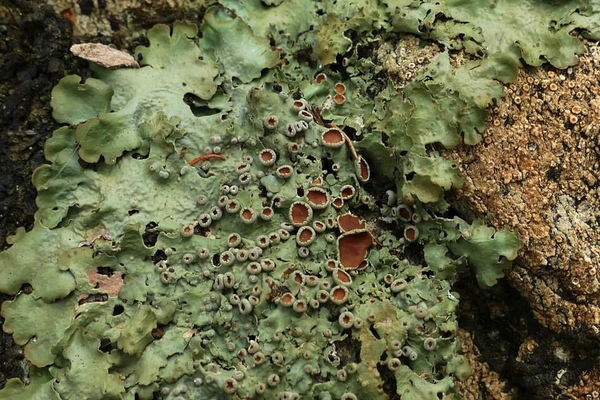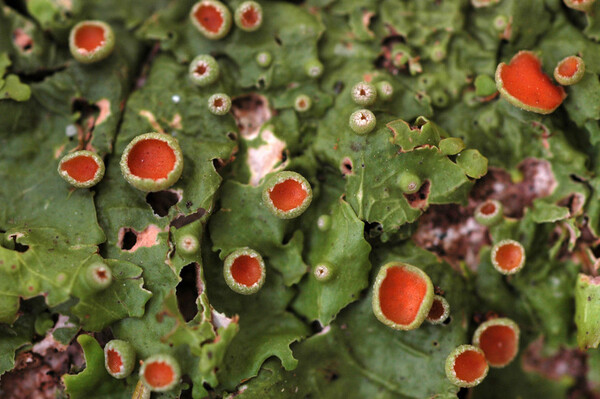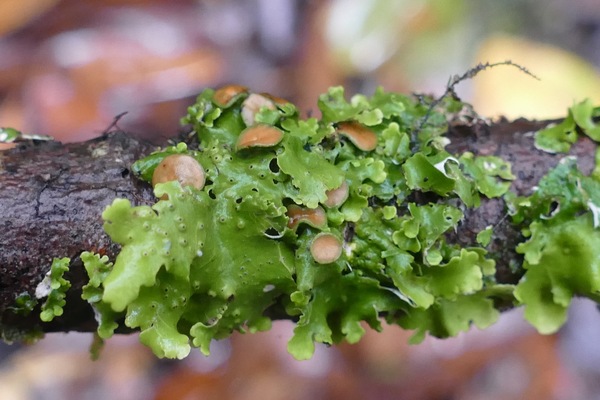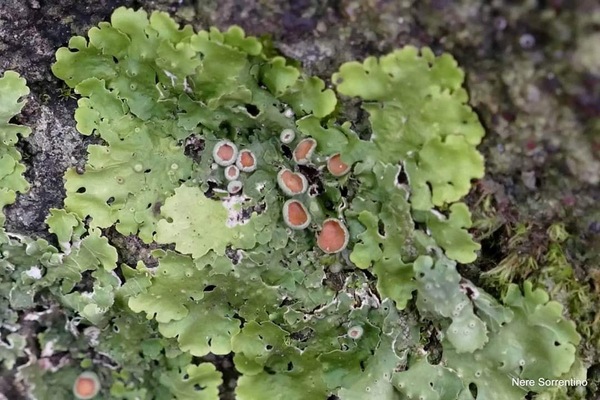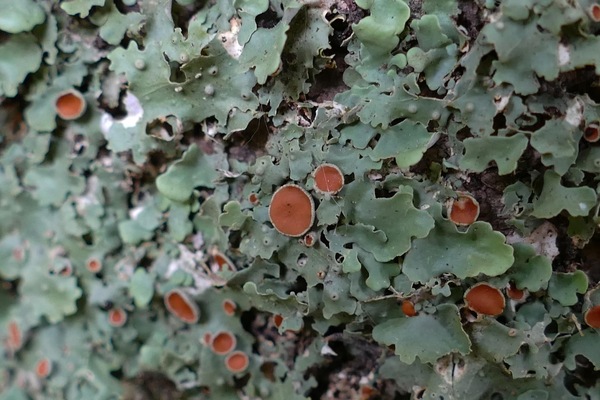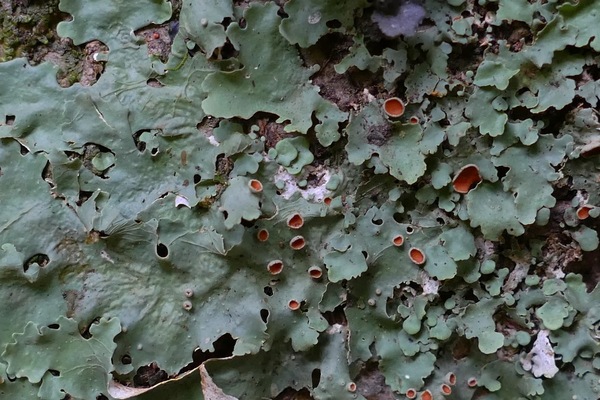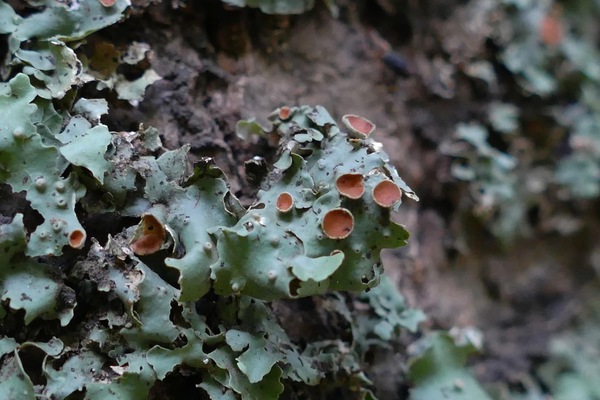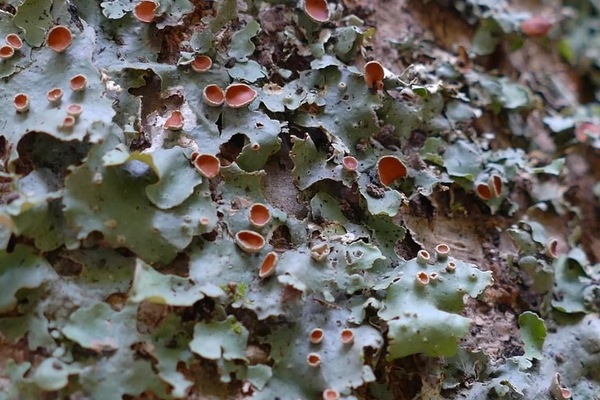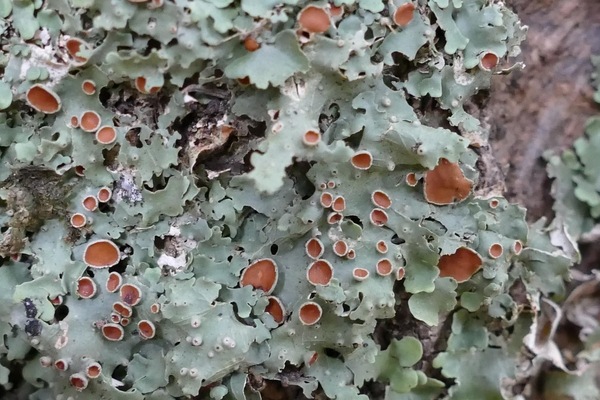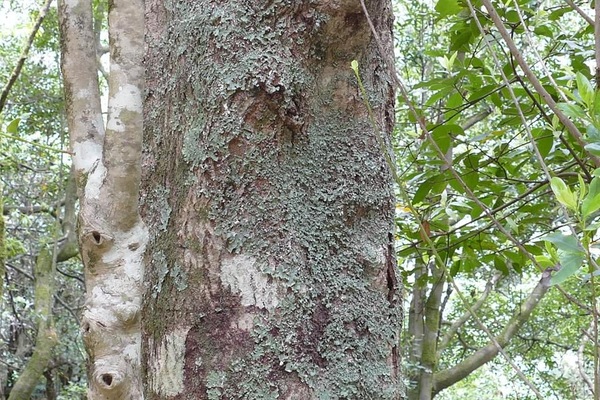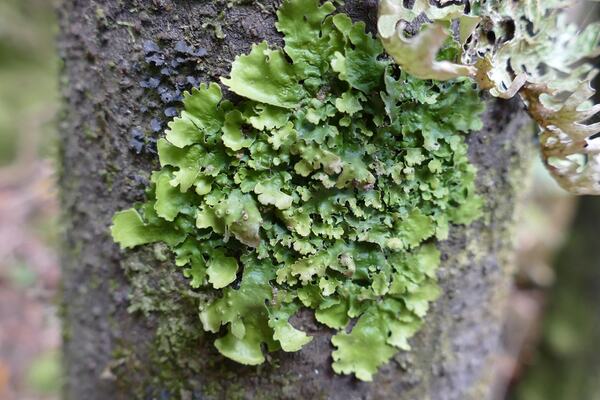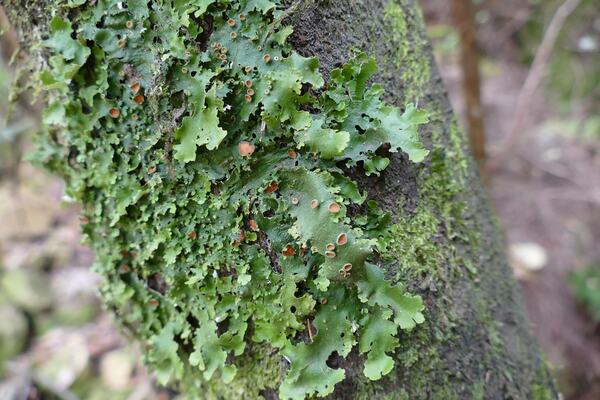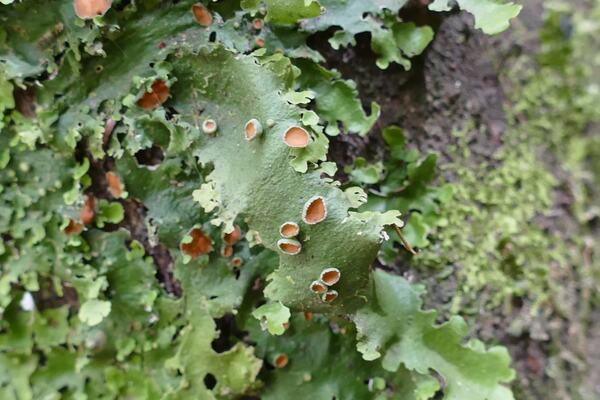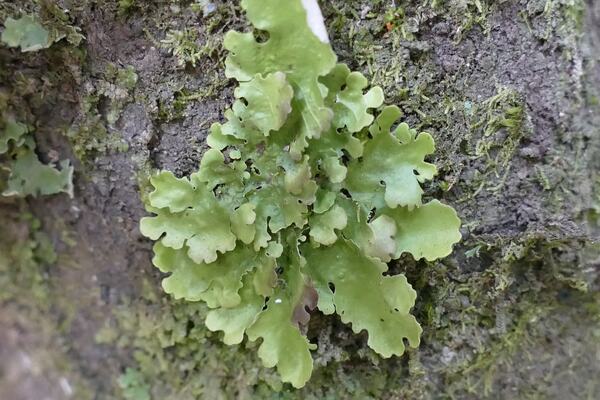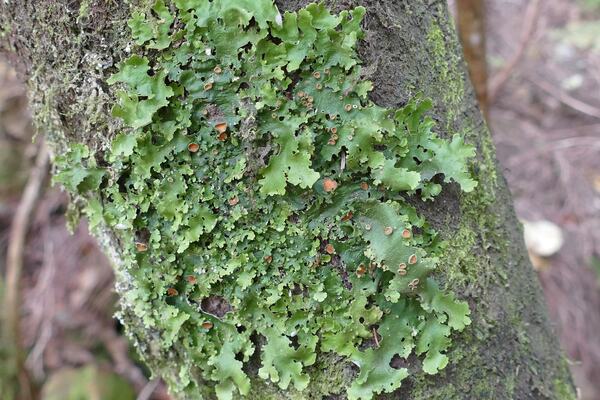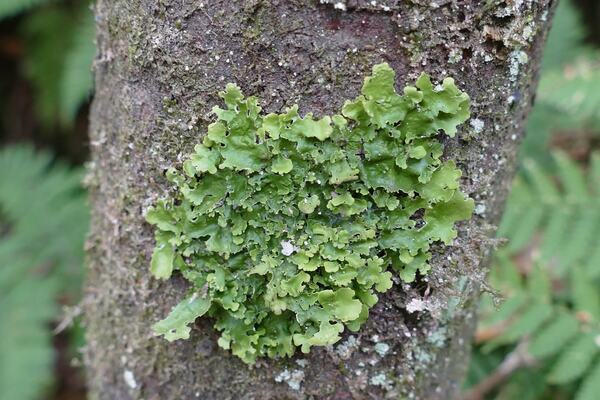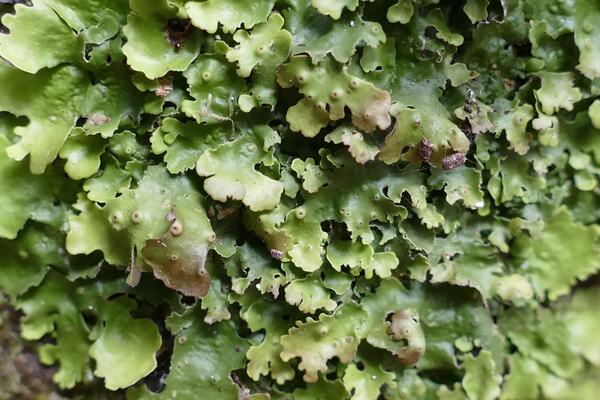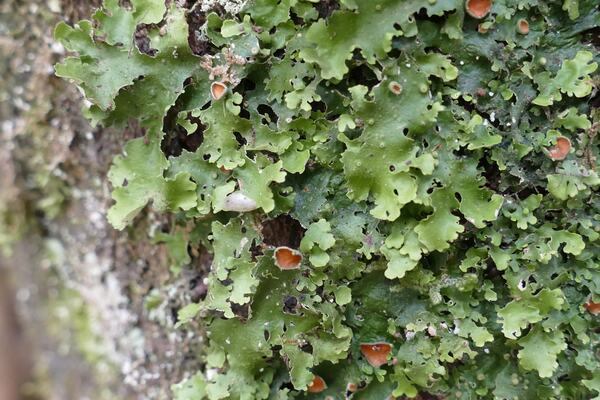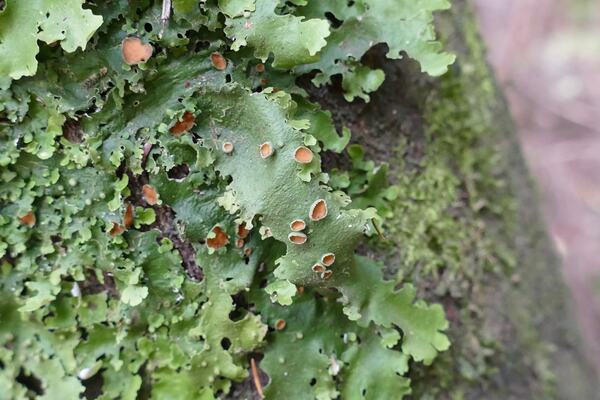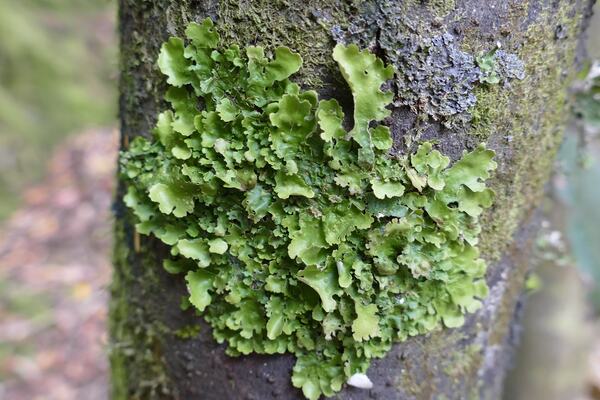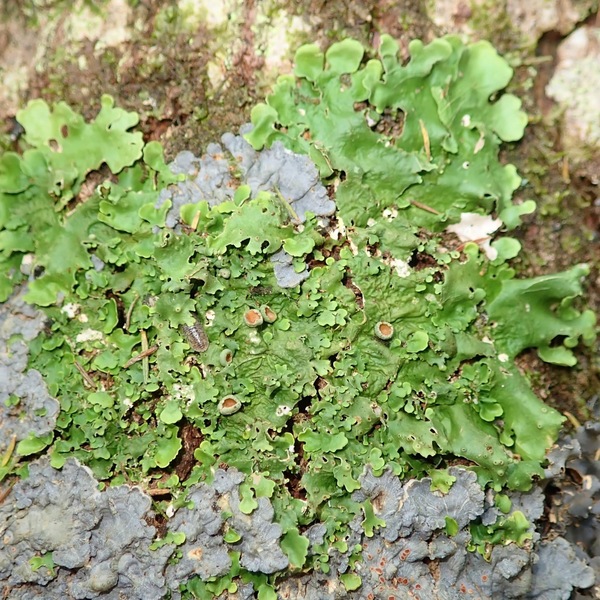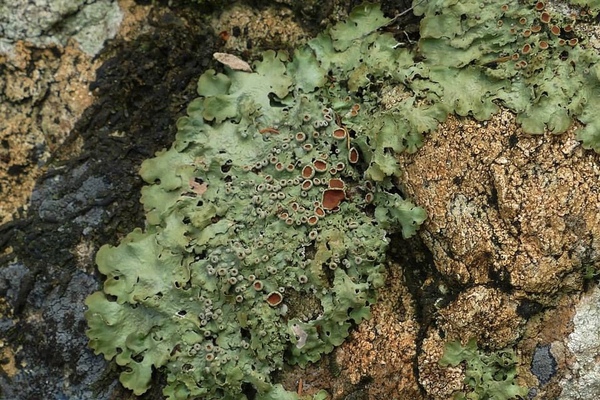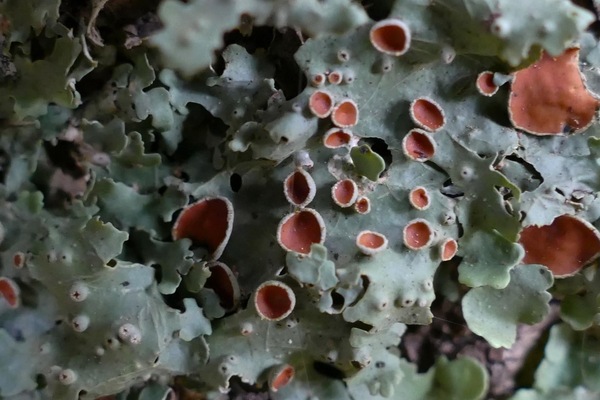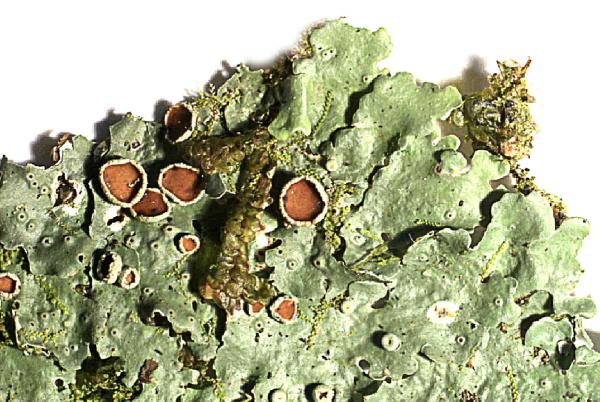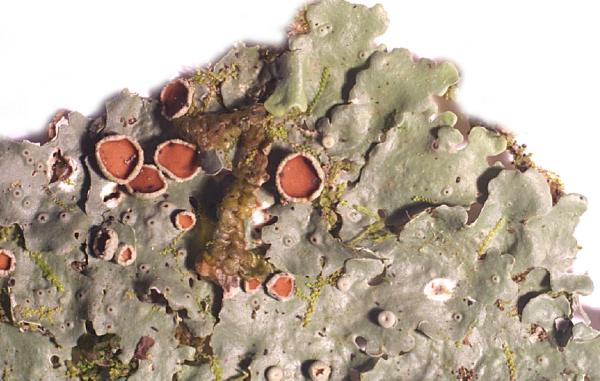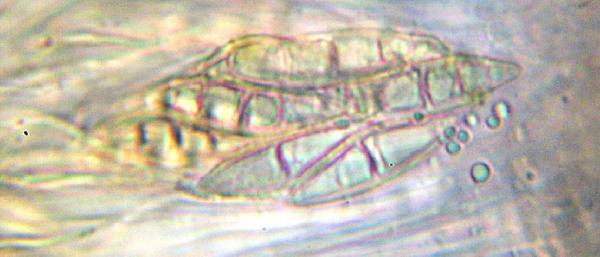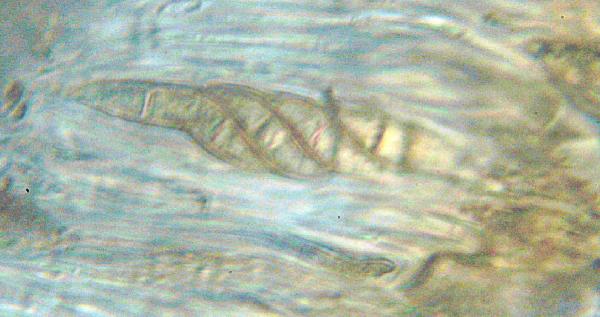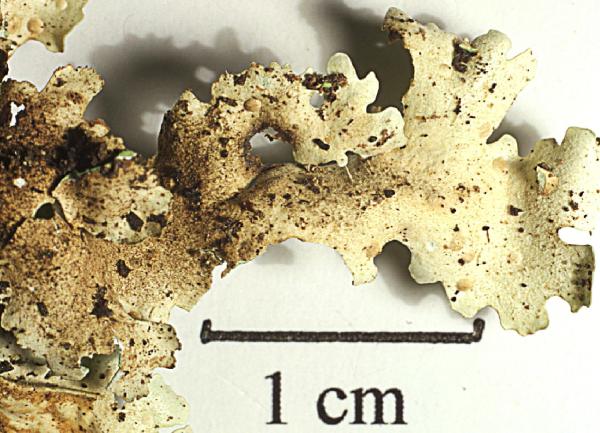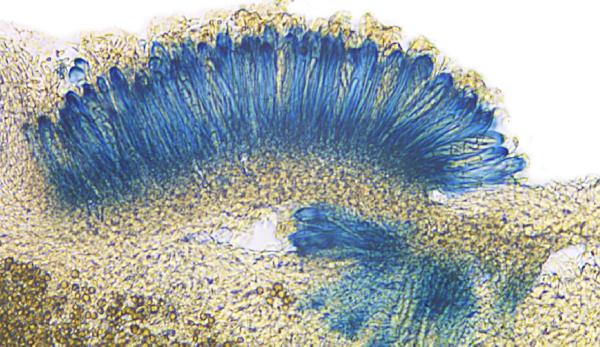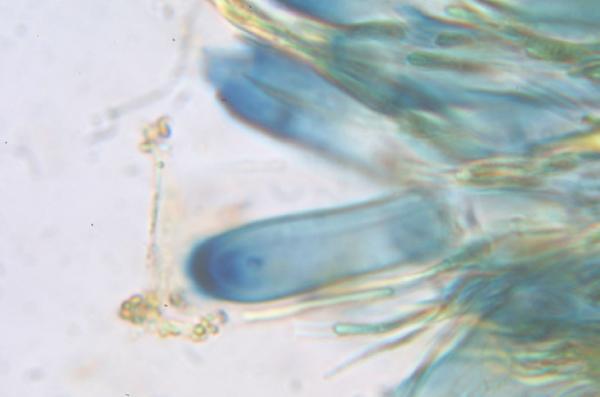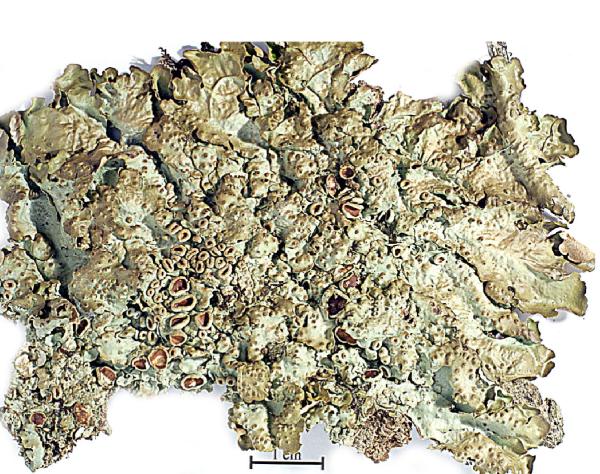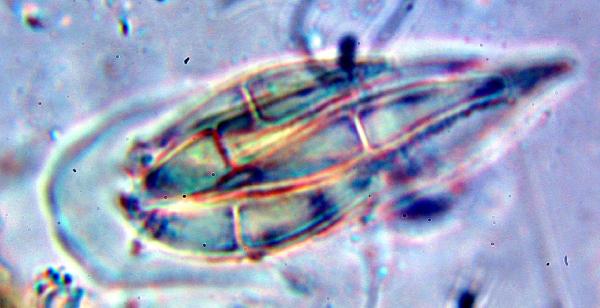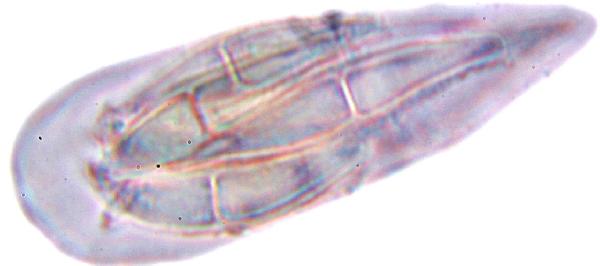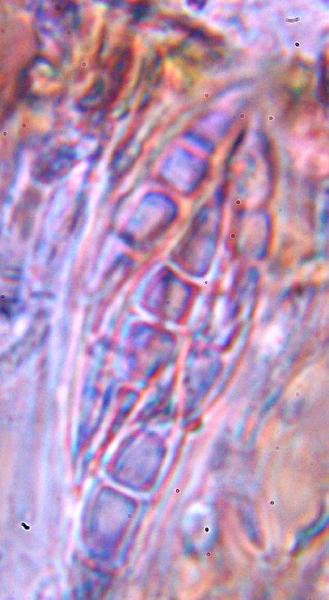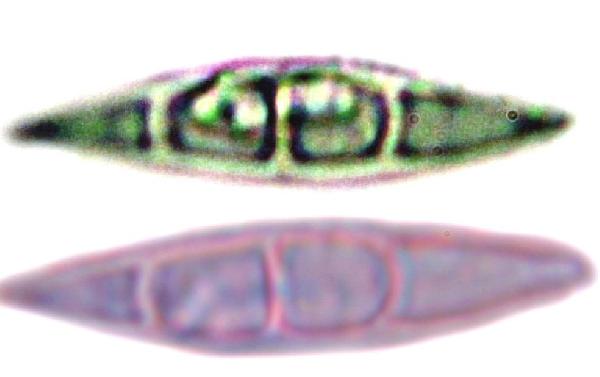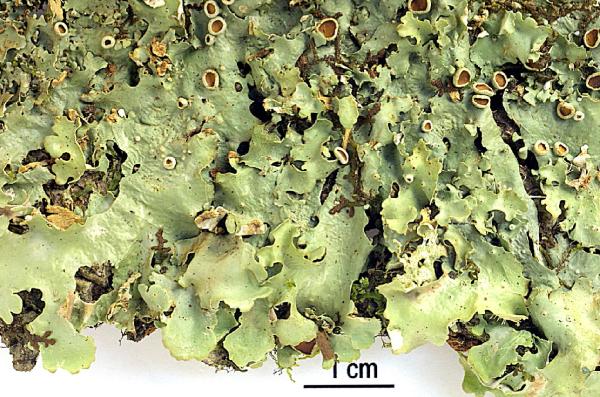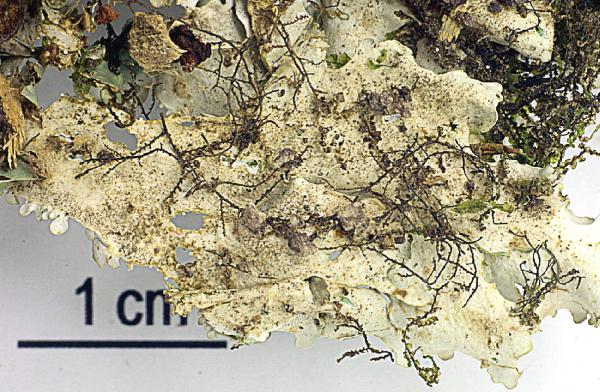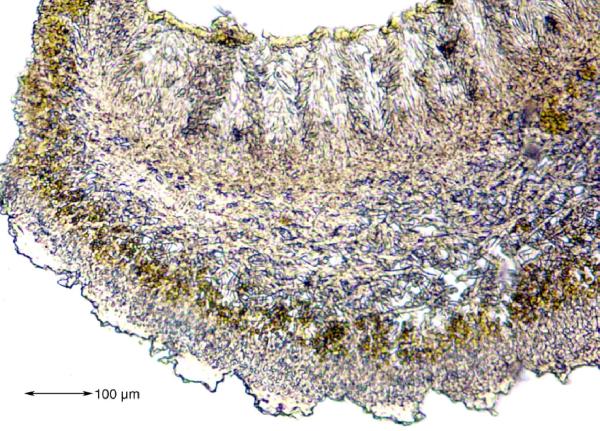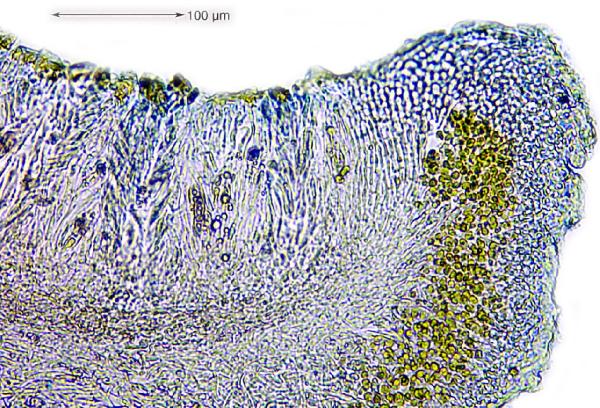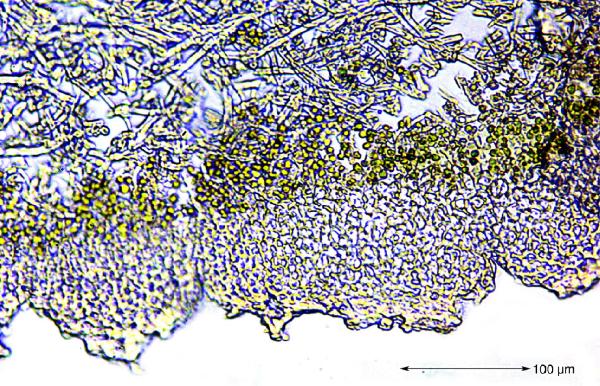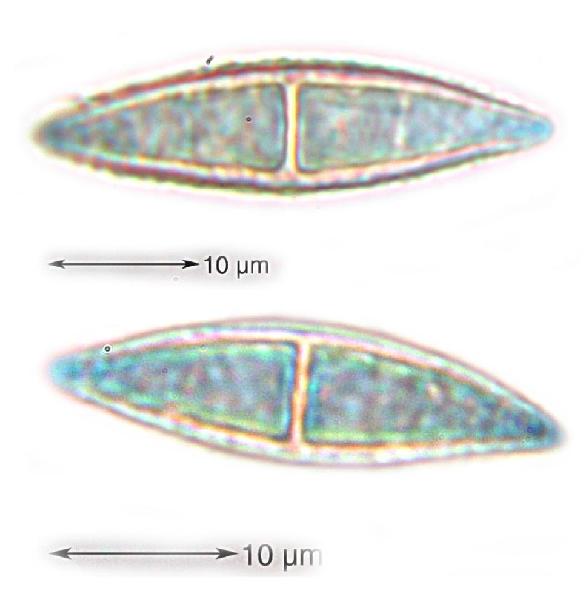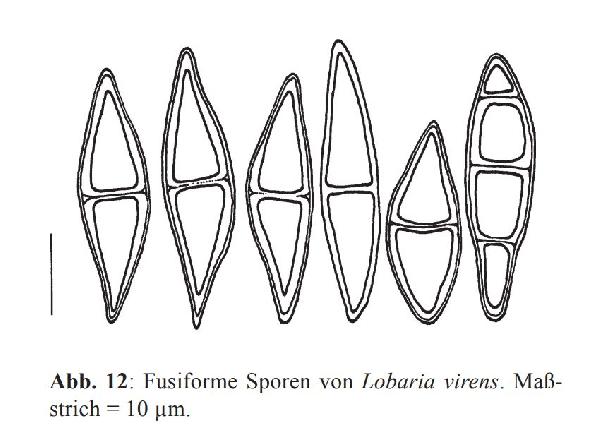Ricasolia virens (With.) H.H. Blom. & Tønsberg
in Tønsberg & al., Opuscula Philolich., 15: 15, 2016. Basionym: Lichen virens With. - Bot. Arrang. Veg. Gr. Brit.: 710, 1776.
Synonyms: Lobaria herbacea (Huds.) DC.; Lobaria laetevirens (Lightf.) Zahlbr.; Lobaria virens (With.) J.R. Laundon; Ricasolia herbacea (Huds.) De Not.; Sticta herbacea (Huds.) Ach.
Distribution: N - Ven, Lomb (S-L29262), Lig (Watson 2014). C - Tosc, Marc, Umb (Ravera & al. 2006), Laz, Abr, Sar (Ravera & al. 2021c, Di Nuzzo & al. 2022, Ravera & al. 2024a). S - Camp (Puntillo & al. 2000, Ricciardi & al. 2000, Nimis & Tretiach 2004, Puntillo & Puntillo 2011), Pugl (Nimis & Tretiach 1999), Bas, Cal (Tretiach 1993, Puntillo & Vezda 1994, Puntillo 1995, 1996, Schumm 2003, Giordani & al. 2009), Si (Tretiach 1993, Ottonello & Romano 1997, Ottonello & Puntillo 2009, Ottonello & al. 2011).
Description: Thallus foliose, heteromerous, dorsiventral, broad-lobed, more or less closely adpressed, forming up to 10 cm wide rosettes, up to 0.4 mm thick, the lobes becoming imbricate in central parts, otherwise contiguous, smooth, (3-)5-15(-20) mm wide, with rounded apices and indented, sometimes lobulate margins. Upper surface dull grey-green to grey-brown when dry, bright green when wet, smooth and shiny, more rarely becoming wrinkled in central parts, very rarely (known only from Norway) with dendriscocauloid external cephalodia; lower surface almost white, with patches of a fine, brown tomentum. Upper and lower cortex paraplectenchymatous; medulla white, with globose internal cephalodia visible on the underside of the thallus as brownish, convex swellings of the lower cortex. Apothecia usually abundant, lecanorine, to 10 mm across, with a pale pink-brown to orange-red disc and an inflexed, often warted thalline margin. Epithecium brownish; hymenium colourless; paraphyses mostly simple; hypothecium colourless, subtended by a more or less continuous algal layer. Asci 8-spored, cylindrical, fissitunicate, the apex of the endoascus with a K/I+ blue ring-shaped structure, Peltigera-type. Ascospores 1(-3)-septate, at first hyaline then pale brown, fusiform, straight or slightly curved, (25-)30-47 x (6-)8-11 μm. Pycnidia frequent, with a brown ostiole. Conidia dumbell-shaped, widened at both ends, 4-5 x c. 1.5 μm. Photobiont chlorococcoid in thallus, cyanobacterial (Nostoc) in the cephalodia. Spot tests: upper cortex K-, C-, KC-, P-; medulla K- or K+ pale yellow, C-, KC- or KC+ faintly pink, P-. Chemistry: without lichen substances, or medulla with low amounts of scrobiculin.
Note: a mild-temperate to humid subtropical species found on old deciduous trees, more rarely on mossy rocks in old, natural, warm-humid forests; probably almost extinct in Northern Italy and along the eastern side of the Peninsula, except in the Gargano Peninsula, and very much declining, locally abundant only in few humid forests of Southern Italy. It is included in the Italian red list of epiphytic lichens as “Near-threatened” (Nascimbene & al. 2013c).
Growth form: Foliose, broad lobed
Substrata: bark
Photobiont: green algae other than Trentepohlia
Reproductive strategy: mainly sexual
Restricted to humid-warm, oceanic areas
Commonnes-rarity: (info)
Alpine belt: absent
Subalpine belt: absent
Oromediterranean belt: absent
Montane belt: extremely rare
Submediterranean belt: absent
Padanian area: absent
Humid submediterranean belt: extremely rare
Humid mediterranean belt: extremely rare
Dry mediterranean belt: absent
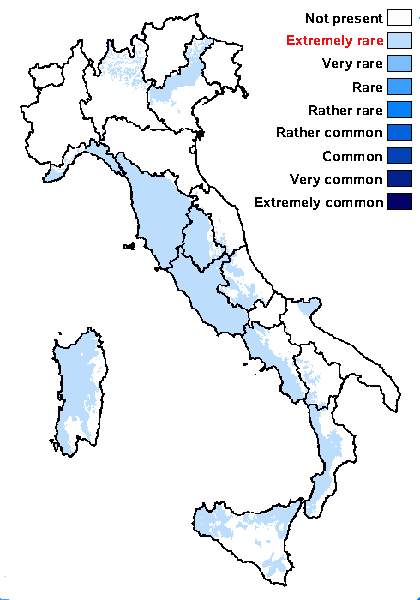
Predictive model
Herbarium samples
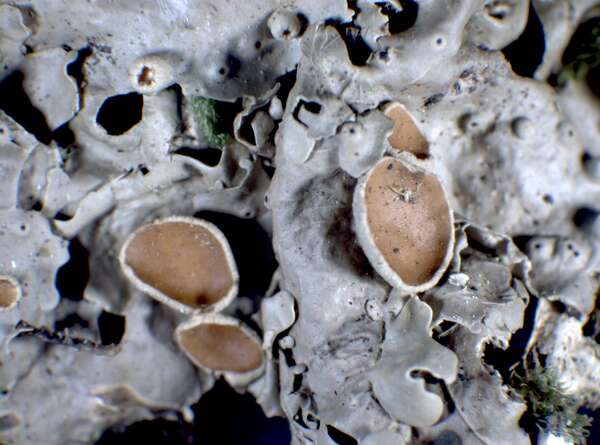

P.L. Nimis; Owner: Department of Life Sciences, University of Trieste
Herbarium: TSB (20247)
2001/11/26
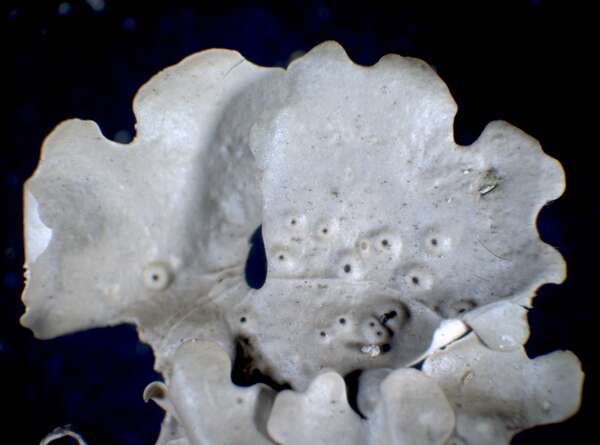

P.L. Nimis; Owner: Department of Life Sciences, University of Trieste
Herbarium: TSB (20247)
2001/11/26
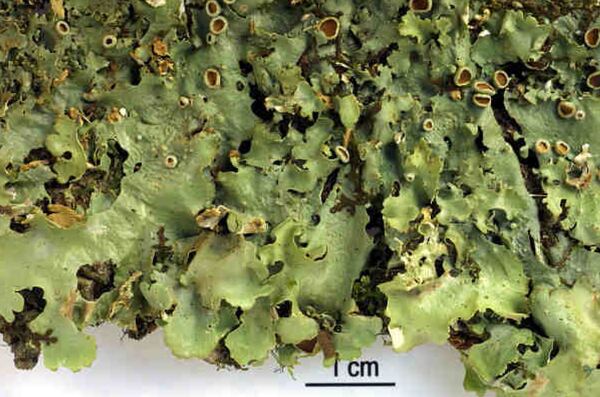

Felix Schumm - CC BY-SA 4.0
Image from: F. Schumm (2008) - Flechten Madeiras, der Kanaren und Azoren. Beck, OHG - ISBN: 978-3-00-023700-3
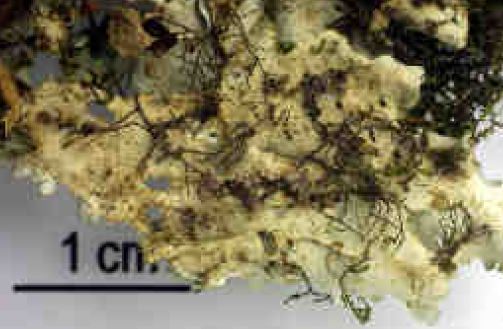

Felix Schumm - CC BY-SA 4.0
Image from: F. Schumm (2008) - Flechten Madeiras, der Kanaren und Azoren. Beck, OHG - ISBN: 978-3-00-023700-3
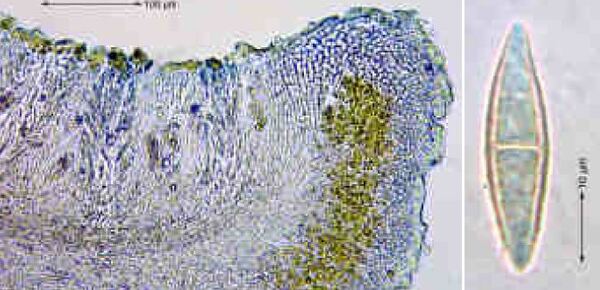

Felix Schumm - CC BY-SA 4.0
Image from: F. Schumm (2008) - Flechten Madeiras, der Kanaren und Azoren. Beck, OHG - ISBN: 978-3-00-023700-3
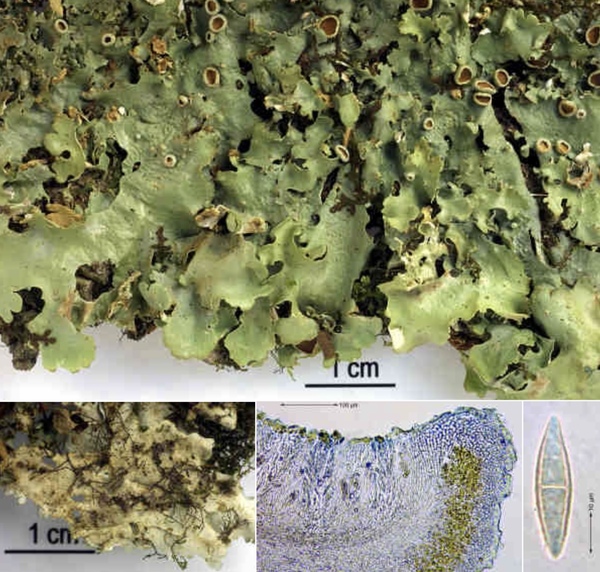

Felix Schumm – CC BY-SA 4.0
Image from: F. Schumm (2008) - Flechten Madeiras, der Kanaren und Azoren. Beck, OHG - ISBN: 978-3-00-023700-3
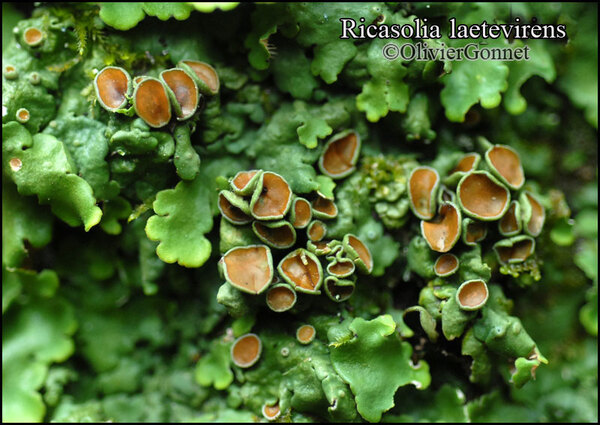
Courtesy Danièle et Olivier Gonnet - Source: https://www.afl-lichenologie.fr/Photos_AFL/Photos_AFL_R/Textes_R/Ricasolia_laetevirens.htm
France, 24/03/2014 - Miluccia - Corse
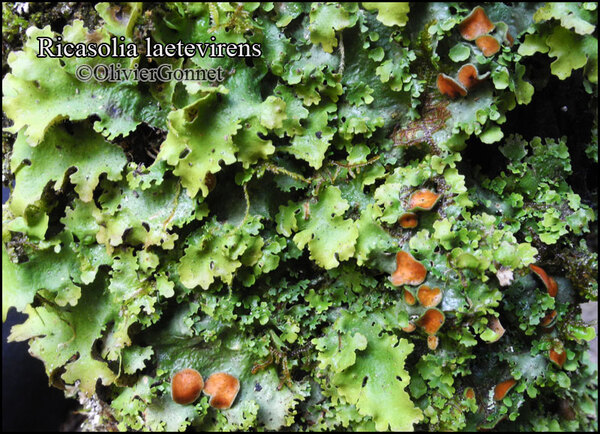
Courtesy Danièle et Olivier Gonnet - Source: https://www.afl-lichenologie.fr/Photos_AFL/Photos_AFL_R/Textes_R/Ricasolia_laetevirens.htm
France, 24/03/2014 - Miluccia - Corse
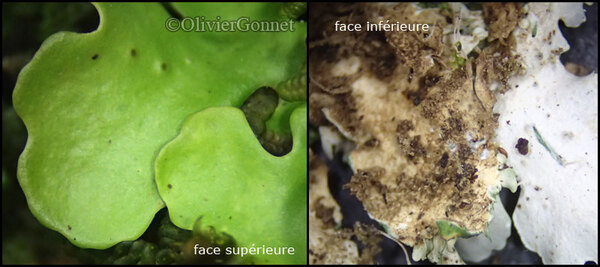
Courtesy Danièle et Olivier Gonnet - Source: https://www.afl-lichenologie.fr/Photos_AFL/Photos_AFL_R/Textes_R/Ricasolia_laetevirens.htm
France, 24/03/2014 - Miluccia - Corse
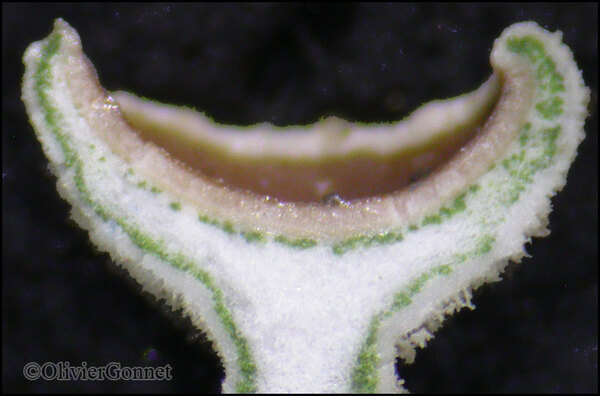
Courtesy Danièle et Olivier Gonnet - Source: https://www.afl-lichenologie.fr/Photos_AFL/Photos_AFL_R/Textes_R/Ricasolia_laetevirens.htm
France, 24/03/2014 - Miluccia - Corse
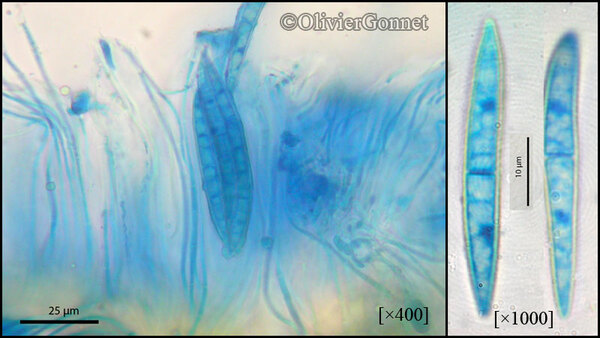
Courtesy Danièle et Olivier Gonnet - Source: https://www.afl-lichenologie.fr/Photos_AFL/Photos_AFL_R/Textes_R/Ricasolia_laetevirens.htm
France, 24/03/2014 - Miluccia - Corse
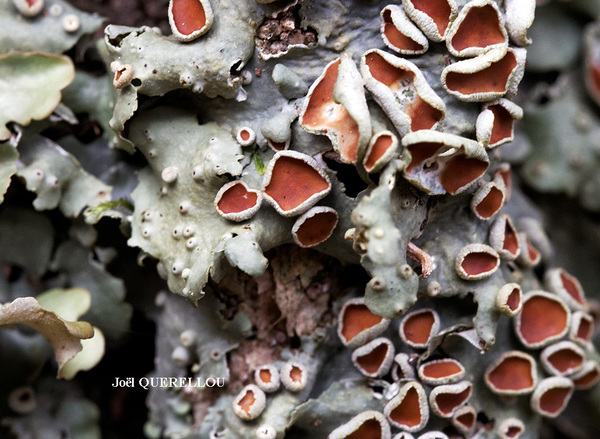
Joël Querellou - Source: http://www.lichensmaritimes.org/index.php?task=fiche&lichen=318&lang=en
France, Forêt du Cranou

Joël Querellou - Source: http://www.lichensmaritimes.org/index.php?task=fiche&lichen=318&lang=en
France, Forêt du Cranou
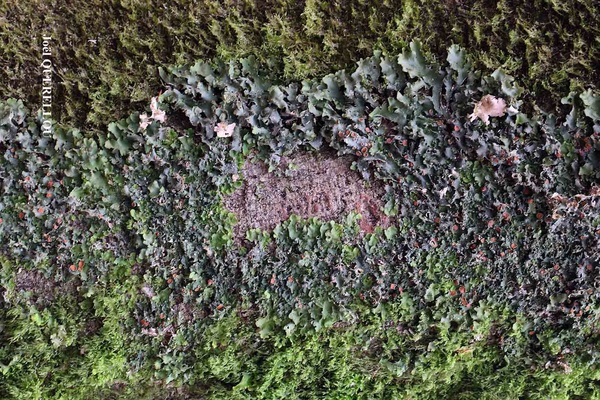
Joël Querellou - Source: http://www.lichensmaritimes.org/index.php?task=fiche&lichen=318&lang=en
France, Forêt du Cranou

Joël Querellou - Source: http://www.lichensmaritimes.org/index.php?task=fiche&lichen=318&lang=en
France, Forêt du Cranou

Joël Querellou - Source: http://www.lichensmaritimes.org/index.php?task=fiche&lichen=318&lang=en
France, Forêt du Cranou
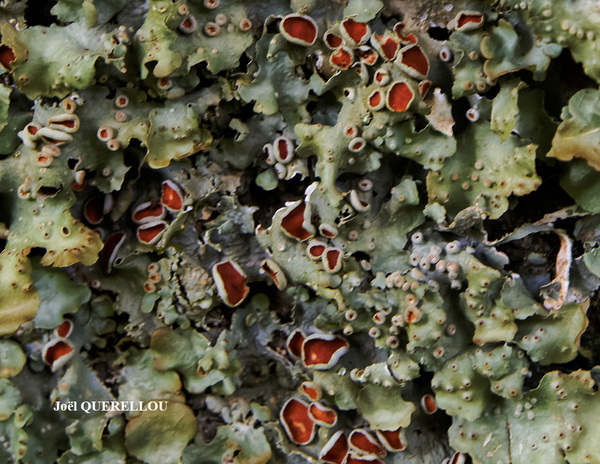
Joël Querellou - Source: http://www.lichensmaritimes.org/index.php?task=fiche&lichen=318&lang=en
France, Forêt du Cranou
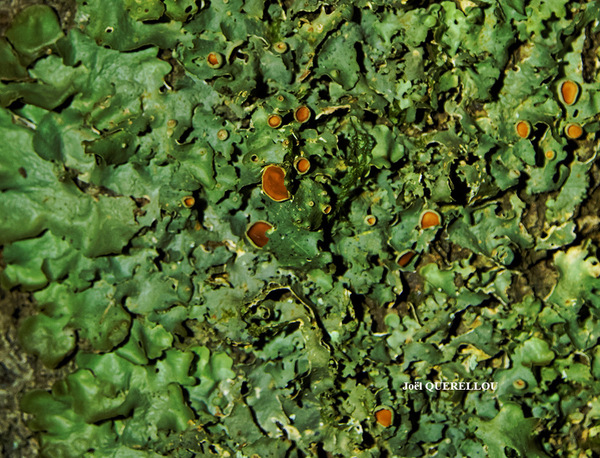
Joël Querellou - Source: http://www.lichensmaritimes.org/index.php?task=fiche&lichen=318&lang=en
France, Forêt du Cranou

Joël Querellou - Source: http://www.lichensmaritimes.org/index.php?task=fiche&lichen=318&lang=en
France, Forêt du Cranou
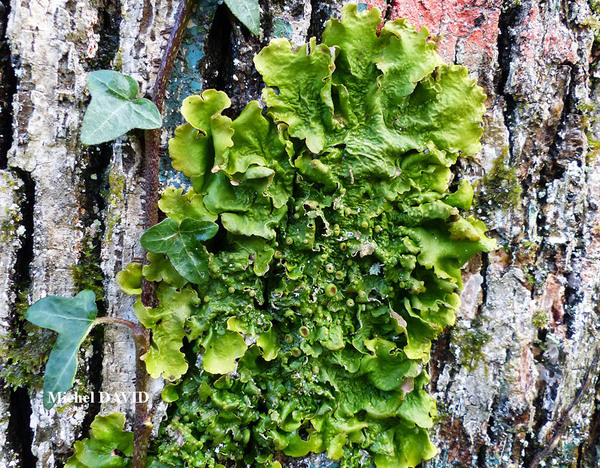
Michel David - Source: http://www.lichensmaritimes.org/index.php?task=fiche&lichen=318&lang=en
France, Forêt du Cranou
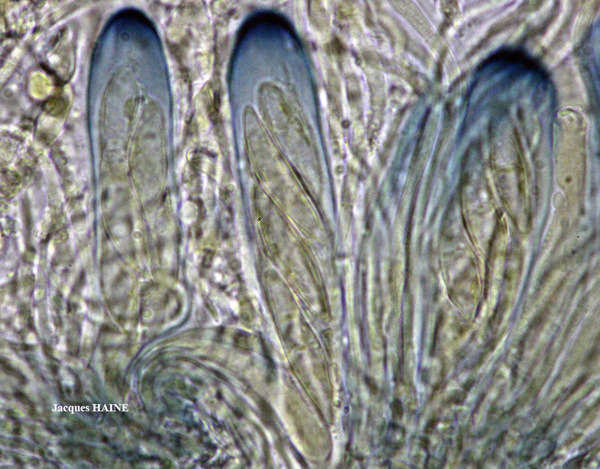
Jacques Haine - Source: http://www.lichensmaritimes.org/index.php?task=fiche&lichen=318&lang=en
France, Forêt du Cranou
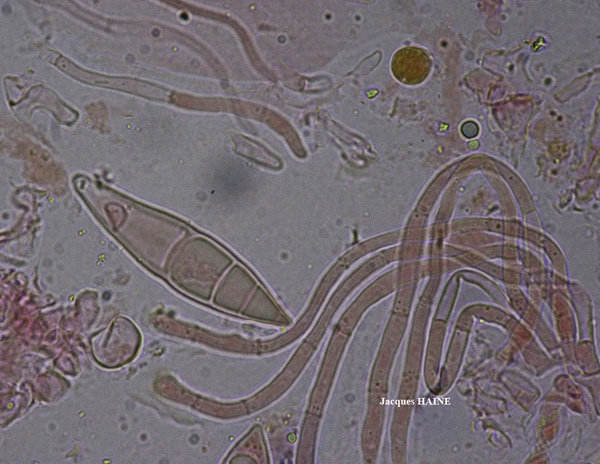
Jacques Haine - Source: http://www.lichensmaritimes.org/index.php?task=fiche&lichen=318&lang=en
France, Forêt du Cranou
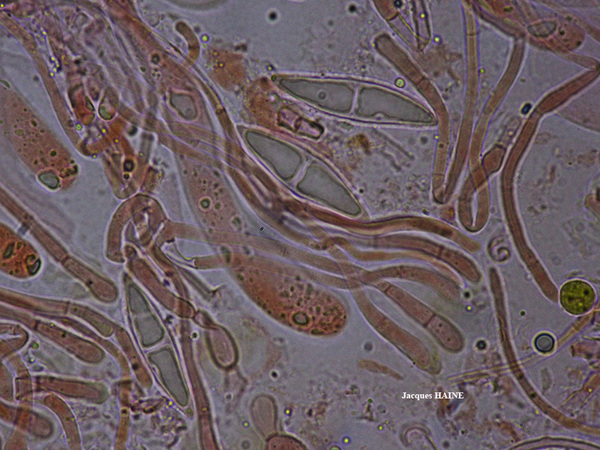
Jacques Haine - Source: http://www.lichensmaritimes.org/index.php?task=fiche&lichen=318&lang=en
France, Forêt du Cranou
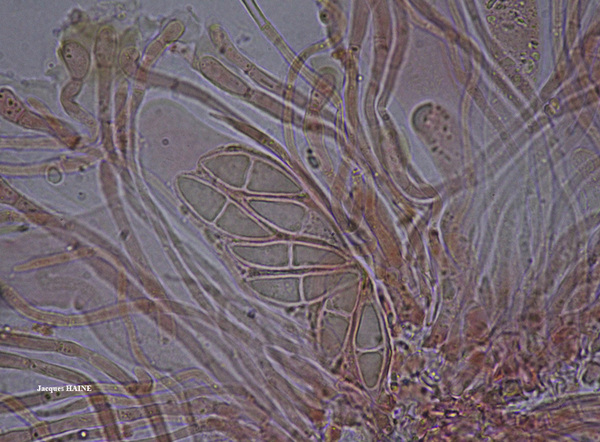
Jacques Haine - Source: http://www.lichensmaritimes.org/index.php?task=fiche&lichen=318&lang=en
France, Forêt du Cranou
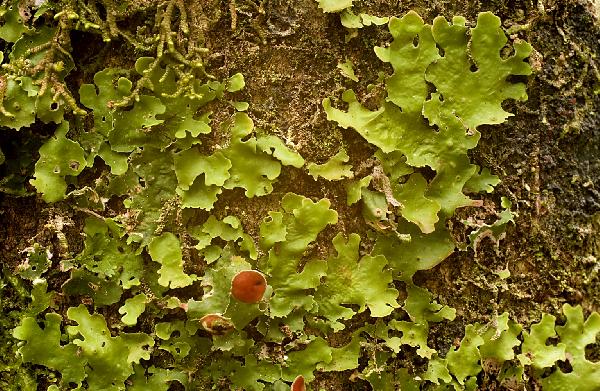
Ulrich Kirschbaum CC BY-SA 4.0 - Source: https://www.thm.de/lse/ulrich-kirschbaum/flechtenbilder
Portugal: Madeira.
Growth form: Foliose, broad lobed
Substrata: bark
Photobiont: green algae other than Trentepohlia
Reproductive strategy: mainly sexual
Restricted to humid-warm, oceanic areas
Commonnes-rarity: (info)
Alpine belt: absent
Subalpine belt: absent
Oromediterranean belt: absent
Montane belt: extremely rare
Submediterranean belt: absent
Padanian area: absent
Humid submediterranean belt: extremely rare
Humid mediterranean belt: extremely rare
Dry mediterranean belt: absent

Predictive model
| Herbarium samples |


P.L. Nimis; Owner: Department of Life Sciences, University of Trieste
Herbarium: TSB (20247)
2001/11/26


P.L. Nimis; Owner: Department of Life Sciences, University of Trieste
Herbarium: TSB (20247)
2001/11/26


Felix Schumm - CC BY-SA 4.0
Image from: F. Schumm (2008) - Flechten Madeiras, der Kanaren und Azoren. Beck, OHG - ISBN: 978-3-00-023700-3


Felix Schumm - CC BY-SA 4.0
Image from: F. Schumm (2008) - Flechten Madeiras, der Kanaren und Azoren. Beck, OHG - ISBN: 978-3-00-023700-3


Felix Schumm - CC BY-SA 4.0
Image from: F. Schumm (2008) - Flechten Madeiras, der Kanaren und Azoren. Beck, OHG - ISBN: 978-3-00-023700-3


Felix Schumm – CC BY-SA 4.0
Image from: F. Schumm (2008) - Flechten Madeiras, der Kanaren und Azoren. Beck, OHG - ISBN: 978-3-00-023700-3

Courtesy Danièle et Olivier Gonnet - Source: https://www.afl-lichenologie.fr/Photos_AFL/Photos_AFL_R/Textes_R/Ricasolia_laetevirens.htm
France, 24/03/2014 - Miluccia - Corse

Courtesy Danièle et Olivier Gonnet - Source: https://www.afl-lichenologie.fr/Photos_AFL/Photos_AFL_R/Textes_R/Ricasolia_laetevirens.htm
France, 24/03/2014 - Miluccia - Corse

Courtesy Danièle et Olivier Gonnet - Source: https://www.afl-lichenologie.fr/Photos_AFL/Photos_AFL_R/Textes_R/Ricasolia_laetevirens.htm
France, 24/03/2014 - Miluccia - Corse

Courtesy Danièle et Olivier Gonnet - Source: https://www.afl-lichenologie.fr/Photos_AFL/Photos_AFL_R/Textes_R/Ricasolia_laetevirens.htm
France, 24/03/2014 - Miluccia - Corse

Courtesy Danièle et Olivier Gonnet - Source: https://www.afl-lichenologie.fr/Photos_AFL/Photos_AFL_R/Textes_R/Ricasolia_laetevirens.htm
France, 24/03/2014 - Miluccia - Corse

Joël Querellou - Source: http://www.lichensmaritimes.org/index.php?task=fiche&lichen=318&lang=en
France, Forêt du Cranou

Joël Querellou - Source: http://www.lichensmaritimes.org/index.php?task=fiche&lichen=318&lang=en
France, Forêt du Cranou

Joël Querellou - Source: http://www.lichensmaritimes.org/index.php?task=fiche&lichen=318&lang=en
France, Forêt du Cranou

Joël Querellou - Source: http://www.lichensmaritimes.org/index.php?task=fiche&lichen=318&lang=en
France, Forêt du Cranou

Joël Querellou - Source: http://www.lichensmaritimes.org/index.php?task=fiche&lichen=318&lang=en
France, Forêt du Cranou

Joël Querellou - Source: http://www.lichensmaritimes.org/index.php?task=fiche&lichen=318&lang=en
France, Forêt du Cranou

Joël Querellou - Source: http://www.lichensmaritimes.org/index.php?task=fiche&lichen=318&lang=en
France, Forêt du Cranou

Joël Querellou - Source: http://www.lichensmaritimes.org/index.php?task=fiche&lichen=318&lang=en
France, Forêt du Cranou

Michel David - Source: http://www.lichensmaritimes.org/index.php?task=fiche&lichen=318&lang=en
France, Forêt du Cranou

Jacques Haine - Source: http://www.lichensmaritimes.org/index.php?task=fiche&lichen=318&lang=en
France, Forêt du Cranou

Jacques Haine - Source: http://www.lichensmaritimes.org/index.php?task=fiche&lichen=318&lang=en
France, Forêt du Cranou

Jacques Haine - Source: http://www.lichensmaritimes.org/index.php?task=fiche&lichen=318&lang=en
France, Forêt du Cranou

Jacques Haine - Source: http://www.lichensmaritimes.org/index.php?task=fiche&lichen=318&lang=en
France, Forêt du Cranou

 INDEX FUNGORUM
INDEX FUNGORUM
 GBIF
GBIF
 DOLICHENS
DOLICHENS
